Your Guide to Planning, Planting, and Growing Ranunculus
Ranunculus flowers look almost too perfect to be real. Their rose-like blossoms have tissue-thin petals and they come in colors that range from cream and pale yellow to apricot, pink, orange, red and burgundy. Though not often seen in home gardens, the exquisite flowers of ranunculus are a staple in high-end flower shops and wedding bouquets.
If you're a fan of ranunculus, why not try growing them yourself? The corms can be planted in containers or in the garden so you can enjoy these beautiful blooms both indoors as cut flowers and outdoors in flower beds, borders and container plantings. Shop our selection of ranunculus HERE.
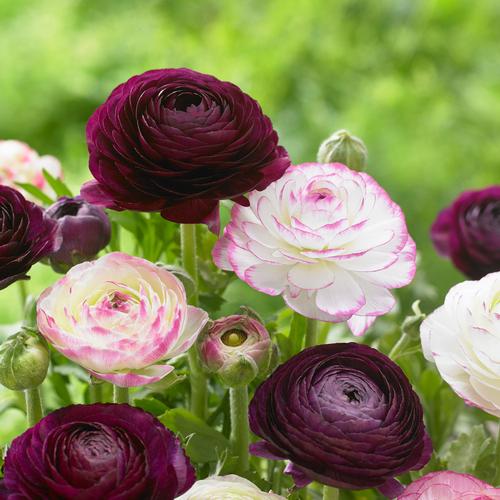
Start with a Quality Plant
Ranunculus grow from corms that resemble little claws. Large corms contain more stored food energy than small corms, and will give you a stronger plant with more flowers. Longfield Gardens supplies 6/7 cm ranunculus corms so you can enjoy the biggest, brightest blooms.
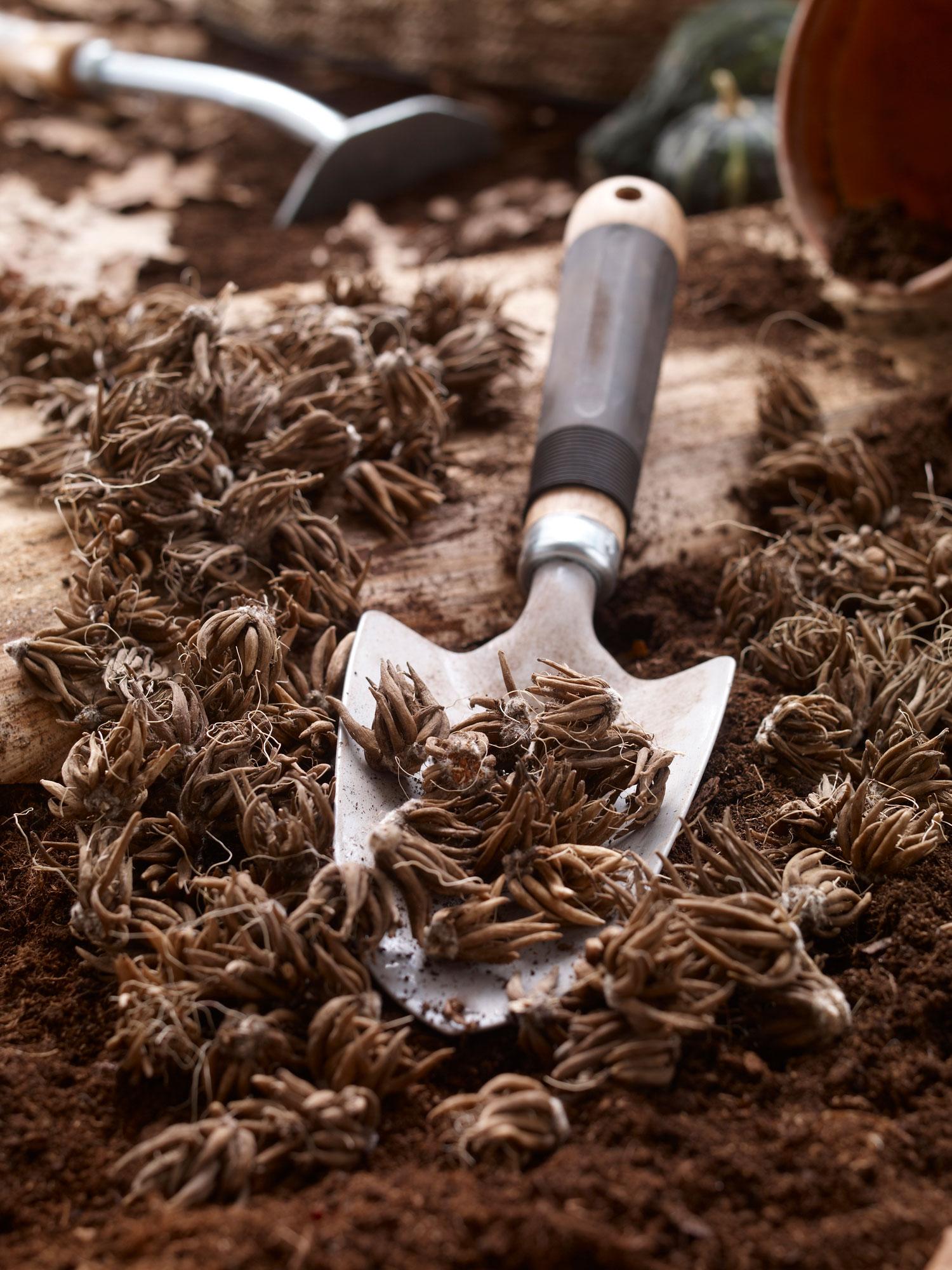
Plan for Success
Sun and Shade: Ranunculus are cool weather plants that need lots of bright light each day. In most climates, they should be grown in full sun. In hot climates they may need some sun protection during the hottest part of the day.
Hardiness Zone: Ranunculus corms are winter hardy in growing zones 8-10, where temperatures do not fall below 25°F. Gardeners in these areas plant ranunculus corms in fall for spring flowers. In colder areas (hardiness zones 4-7), ranunculus will not survive the winter outdoors unless they are grown under a floating row cover or greenhouse. Gardeners in these areas can plant ranunculus corms in late winter or very early spring for early summer flowers. To find your growing zone click HERE.
Soil Conditions: For best results, plant ranunculus corms in light, well-drained soil. Avoid soggy soil, as the corm and roots can rot. If you are growing ranunculus in containers, use a high quality, soil-less growing mix and protect the bulbs from excessive winter moisture.
Air Circulation: Ranunculus foliage is highly susceptible to powdery mildew, so maintaining good airflow in and around the plants is critical. Use drip irrigation or water early in the day so the foliage stays as dry as possible. Avoid overcrowding the plants.
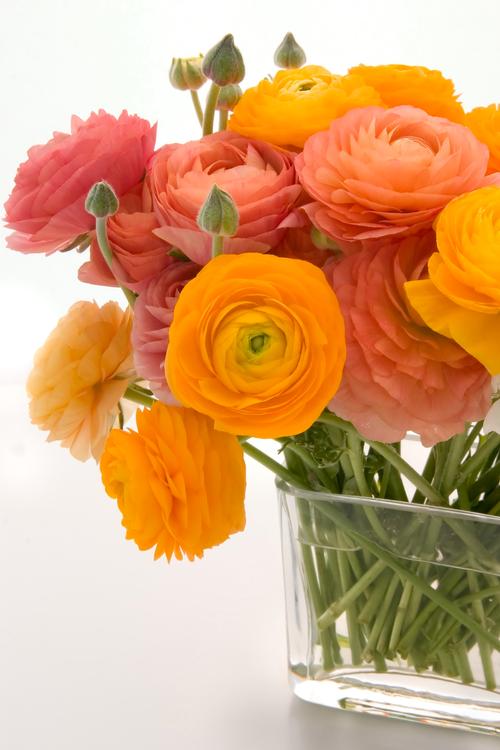
Where to Plant Ranunculus
Ranunculus are cool season flowers that grow best in spring-like temperatures of about 55°F. In warm climates (zones 8-10), the corms are planted in the fall so they will bloom in late winter and early spring. Plant ranunculus in beds and borders, cutting gardens and containers. They are good companions for other spring flowers such as primroses, pansies and larkspur.
In climates where ranunculus are not winter hardy (zones 4-7), the corms are usually planted in late winter or very early spring for flowers in early summer. In these areas, home gardeners often grow ranunculus in containers rather than in the garden. Containers make it easier to control light and soil moisture.
Flower farmers and other commercial growers usually grow ranunculus in a greenhouse. To ensure flawless blossoms, it's important to carefully control air temperatures and well as the amount of light the plants receive. When ranunculus are grown in a greenhouse or under low tunnels, the bulbs are either planted in fall for flowers in late winter and early spring, or in late winter for flowers in spring and early summer.
To learn more, read Cut Flower Favorites: Freesia and Ranunculus.
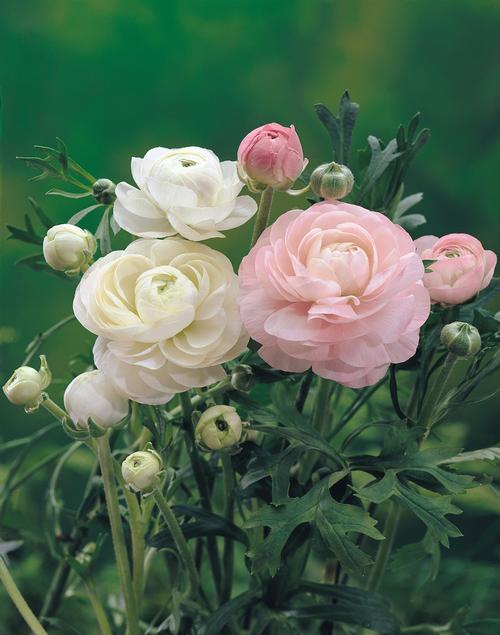
How to Plant Ranunculus
Planting Tips: When ranunculus corms are dormant, they are very hard and dry. You can help them sprout by soaking the corms in room temperature water immediately before planting. Soak them for 3-4 hours (no longer!). To prevent the soaking water from becoming stagnant, run a trickle of water from the faucet into the bowl.
After soaking, we recommend pre-sprouting the corms before planting them into the garden or into containers. Fill a seed tray with about 1" of damp growing mix. Position your pre-soaked corms closely together on top of the mix and cover them with about 1" of moist growing mix. Keep the tray in a dark place for 10 days at 50-60°F. When white roots are visible, the corms are ready to plant. You'll find photos of the soaking and sprouting process in this article: 10 Tips for Growing Ranunculus.
Depth and Spacing: In garden beds, plant the corms 5-8” apart and 2” deep with the claw side down. In containers, you may plant the corms as little as 6" apart, but no closer to avoid crowding. We recommend 1 plant per 8" pot, 2 per 12" pot and 3 in an 18" pot. Shallow depth is OK as ranunculus don't have an extensive root system.
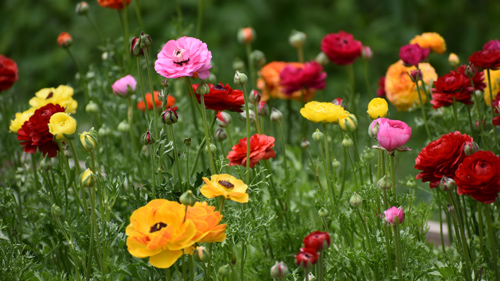
What to Expect
Ranunculus typically bloom approximately 90 days after planting. Once flowering begins, you can expect to get flowers for 4 to 6 weeks.
In good growing conditions, each ranunculus plant develops a large root ball. If you are growing ranunculus in pots, be sure to allow plenty of space for the roots so the plants can get reach their full potential.
For long-lasting bouquets, cut ranunculus flowers as soon as they begin to show color.
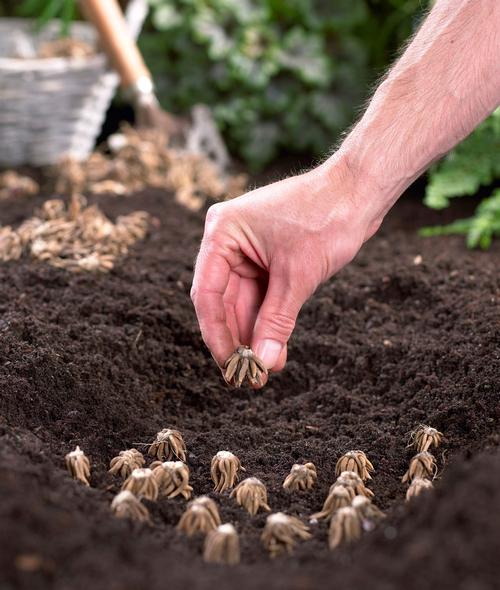
Caring for Ranunculus after they Bloom
Ranunculus are winter hardy in zones 8-10. To encourage the plants to come back a second year, make sure to plant them in very well drained soil. Keep in mind that these plants do not like hot weather. Cool coastal conditions are ideal.
In colder areas (zones 4-7) or where growing conditions are less than ideal, ranunculus are usually treated as annuals, with fresh bulbs planted each spring.
You may also be interested in watching this video about growing ranunculus: Ranunculus Planting Guide.

